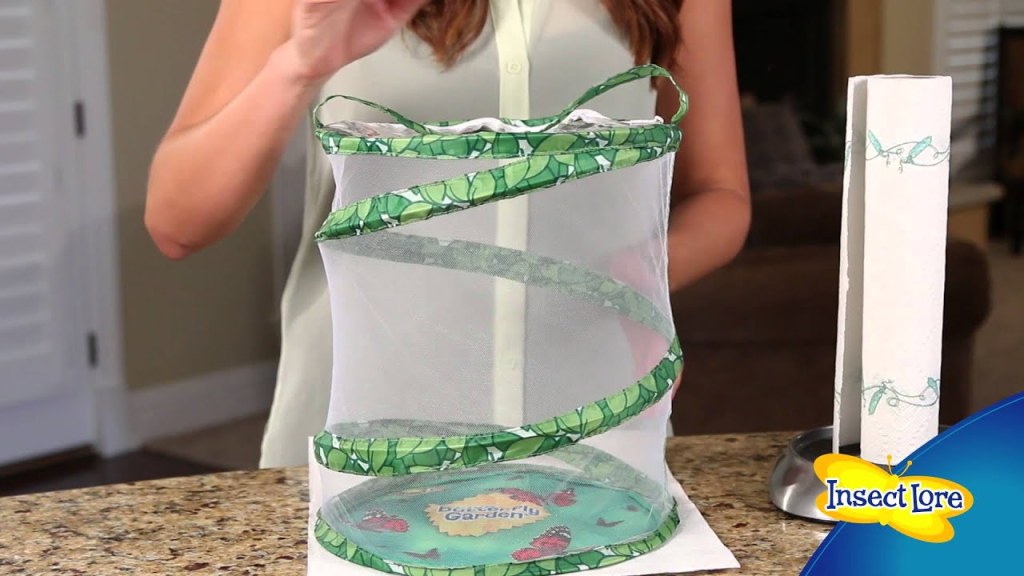Unveiling The Mystery: Exploring The Red Stuff From Butterflies And Its Enigmatic Origins
What is the Red Stuff from Butterflies?
Introduction
Hello, Smart Peoples! Welcome to this informative article about the fascinating world of butterflies. Today, we will explore a curious aspect of these beautiful creatures: the red stuff that can be found on their wings. Butterflies are known for their vibrant colors, and the presence of this red substance adds to their allure. In this article, we will delve into what exactly this red stuff is, its purpose, and how it contributes to the lives of butterflies. So, let’s embark on this journey together!
Before we get into the specifics of the red stuff from butterflies, let’s first understand the basics. Butterflies are insects belonging to the order Lepidoptera, which also includes moths. They are known for their delicate wings, often adorned with intricate patterns and vibrant colors. These colors serve various purposes, including attracting mates, camouflage, and warning predators. Now, let’s unravel the mystery of the red stuff!
1 Picture Gallery: Unveiling The Mystery: Exploring The Red Stuff From Butterflies And Its Enigmatic Origins

What is the Red Stuff from Butterflies?
🔍 The red stuff found on butterflies’ wings is called scale pigment. It is a specialized pigment that gives the wings their red coloration. These scales are tiny, overlapping structures that cover the wings and give them their characteristic patterns and colors.
🌈 The scale pigment responsible for the red coloration is usually a type of pigment called pterins. Pterins are organic compounds that absorb certain wavelengths of light, reflecting the red color back to our eyes. The intensity of the red color can vary among different butterfly species.

Image Source: ytimg.com
🦋 Interestingly, the red scale pigment is not present in all butterflies. It depends on the specific species and individual variations within a species. Some butterflies may have a combination of red and other colors, while others may lack the red pigment altogether.
💡 The red coloration in butterflies serves several purposes. One of the main functions is to attract mates. In many butterfly species, males use their vibrant colors, including red, to court females during the mating season. The red color acts as a visual signal, indicating the male’s health, genetic quality, and ability to provide resources.
❓ Additionally, the red coloration may serve as a form of warning to predators. Many butterflies have evolved to possess bright colors, including red, as a defense mechanism. These colors signal to potential predators that the butterfly is toxic or unpalatable, deterring them from attacking.
🌿 It is important to note that the red coloration is not exclusive to butterflies. Many other insects, such as beetles and bugs, also possess red pigment on their wings or bodies. This coloration is a result of similar pigments and serves similar functions in attracting mates and deterring predators.
🔬 Scientists are still studying the exact mechanisms behind the production and regulation of the red scale pigment in butterflies. Understanding these processes can provide valuable insights into the evolution and ecological interactions of these fascinating creatures.
Who Has the Red Stuff?
🔍 As mentioned earlier, not all butterflies have the red stuff on their wings. The presence of the red scale pigment varies among different species and even within the same species. Some butterfly species are more likely to exhibit red coloration, while others may have different colors or patterns on their wings.
📚 One example of a butterfly species with striking red coloration is the Red Admiral (Vanessa atalanta). This butterfly is known for its deep red stripes on its forewings, which contrast beautifully with the black and white patterns. The Red Admiral is widely distributed across Europe, Asia, and North America.
🦋 Another example is the Indian Red Admiral (Vanessa indica). This species also displays vibrant red coloration on its wings, albeit with different patterns compared to its counterparts in other regions. The Indian Red Admiral is native to the Indian subcontinent.
💡 It is important to note that the presence or absence of the red scale pigment can also vary within a species. This variation can be influenced by factors such as genetics, environmental conditions, and individual variation. Therefore, even within a species that is known to have red coloration, not all individuals may exhibit the same intensity or pattern of red.
When Does the Red Stuff Appear?
🔍 The appearance of the red stuff on butterflies’ wings is primarily determined by their life cycle and developmental stages. Butterflies undergo a complete metamorphosis, consisting of four distinct stages: egg, larva (caterpillar), pupa (chrysalis), and adult (butterfly).
🐛 The red scale pigment starts to develop during the larval stage. As the caterpillar grows and molts, new scales are produced, including those with red pigment. However, the red coloration may not be immediately visible during this stage.
🦋 It is during the pupal stage that the butterfly undergoes a remarkable transformation. Inside the pupa, the caterpillar’s body undergoes extensive remodeling, including the development of wings. The red scale pigment becomes more pronounced and visible as the wings continue to develop.
✨ Once the butterfly emerges from the pupa as an adult, the red coloration on the wings is fully formed and can be observed in all its glory. The intensity of the red may vary among individuals, but it is usually most vibrant and striking during this stage.
Where Can You Find the Red Stuff?
🔍 Butterflies can be found in various habitats worldwide, from tropical rainforests to temperate gardens. The presence of butterflies and the red stuff on their wings depends on their natural distribution and preferred habitats.
🌍 In general, butterflies thrive in areas with an abundance of flowers, as they rely on nectar as a source of energy. They can be found in meadows, gardens, parks, and other places where flowering plants are plentiful.
🌿 The red stuff can be found on the wings of butterflies during their adult stage. When butterflies are in flight or perched, their wings provide a perfect canvas to showcase their vibrant colors, including the red scale pigment.
🦋 It is important to note that the availability of specific butterfly species and the presence of the red stuff can vary depending on the geographical location and the prevailing environmental conditions.
Why Do Butterflies Have the Red Stuff?
🔍 The presence of the red scale pigment in butterflies serves several important purposes, ranging from attracting mates to deterring predators. Let’s explore some of the key reasons why butterflies have the red stuff:
🌹 Attracting Mates: The red coloration on butterflies’ wings is often associated with attracting mates. Male butterflies use their vibrant colors, including red, to court females during the mating season. The intensity and pattern of the red color can signal the male’s genetic quality, health, and ability to provide resources.
🦟 Warning Predators: Many butterflies have evolved to possess bright colors, including red, as a defense mechanism. These colors act as a warning signal to potential predators, indicating that the butterfly is toxic, unpalatable, or simply not worth the effort to attack. This form of defense is known as aposematism.
🌿 Camouflage: While red is often associated with attracting attention, some butterfly species use the red scale pigment as a form of camouflage. In certain habitats, the red color can blend in with specific flowers, foliage, or other elements, making the butterfly less conspicuous to predators.
🔬 Research is ongoing to further understand the evolutionary and ecological significance of the red scale pigment in butterflies. The interplay between visual signals, predator-prey interactions, and environmental factors adds to the complexity of this fascinating phenomenon.
How Does the Red Stuff Contribute to Butterflies’ Lives?
🔍 The red scale pigment plays a crucial role in the lives of butterflies. Here are some ways in which it contributes to their survival and reproduction:
🌸 Mating Success: The vibrant red coloration helps male butterflies attract mates. Females are more likely to choose males with intense and well-defined red patterns on their wings, as these signals indicate genetic fitness and the ability to provide resources for offspring.
🌿 Predation Avoidance: The red coloration serves as a warning signal to predators, deterring them from attacking and potentially consuming the butterfly. Predators learn to associate bright colors, including red, with unpalatable or toxic prey, reducing the likelihood of successful attacks.
🍃 Habitat Selection: The presence of the red stuff on butterflies’ wings may also influence their choice of habitat. Some butterfly species prefer environments where their red coloration blends in with specific flowers or foliage, providing them with a camouflage advantage against predators.
🦋 Species Identification: The red scale pigment, along with other coloration patterns, helps in identifying different butterfly species. Scientists and enthusiasts rely on these unique features to classify and study the vast diversity of butterflies worldwide.
💡 It is important to note that while the red stuff contributes to the survival and reproduction of butterflies, it is just one aspect of their complex biology and ecology. Butterflies rely on a combination of physical adaptations, behaviors, and ecological interactions to thrive in their respective habitats.
Pros and Cons of the Red Stuff from Butterflies
Pros:
1️⃣ Aesthetically Pleasing: The red scale pigment adds to the beauty and allure of butterflies, making them captivating to observe and appreciate.
2️⃣ Mating Advantage: The red coloration helps male butterflies attract mates, increasing their chances of successful reproduction.
3️⃣ Defense Mechanism: The red color serves as a warning signal to predators, deterring them from attacking and potentially consuming the butterfly.
4️⃣ Species Identification: The red scale pigment, along with other coloration patterns, aids in identifying different butterfly species, contributing to scientific research and conservation efforts.
5️⃣ Ecological Significance: Understanding the role of the red stuff in butterflies’ lives provides valuable insights into their evolution, ecological interactions, and the functioning of ecosystems.
Cons:
1️⃣ Increased Vulnerability: The vibrant red coloration can attract the attention of predators, potentially exposing butterflies to higher predation risk.
2️⃣ Energy Expenditure: Producing and maintaining the red scale pigment requires energy resources, which could be otherwise allocated to other vital biological processes.
3️⃣ Environmental Constraints: The availability of specific habitats and resources necessary for the development and maintenance of the red stuff may limit the distribution and survival of certain butterfly species.
4️⃣ Genetic Variation: The presence or absence of the red scale pigment can vary within species, highlighting the genetic diversity and individual variations among butterflies.
5️⃣ Climate Change Impact: Changes in environmental conditions, such as temperature and rainfall patterns, can influence the production and expression of the red stuff, potentially affecting the survival and reproductive success of butterflies.
Frequently Asked Questions (FAQs)
1. Does every butterfly have the red stuff on its wings?
🔍 No, the presence of the red scale pigment varies among butterfly species and even within the same species. Some butterflies may have red coloration, while others may lack the red pigment altogether.
2. Can butterflies change the intensity of their red coloration?
🔍 The intensity of the red coloration in butterflies is usually consistent within an individual. However, there may be slight variations in intensity and pattern between individuals of the same species.
3. Are butterflies with red coloration more toxic or dangerous?
🔍 The red coloration in butterflies can serve as a warning signal to predators, indicating that the butterfly is toxic, unpalatable, or simply not worth the effort to attack. However, not all butterflies with red coloration are necessarily toxic.
4. Can butterflies lose their red coloration over time?
🔍 The red scale pigment on butterflies’ wings is relatively stable and does not fade or change drastically over time. However, environmental factors and aging may affect the overall appearance and vibrancy of the red coloration.
5. How can I attract butterflies to my garden?
🔍 To attract butterflies to your garden, you can create a butterfly-friendly habitat by planting nectar-rich flowers, providing shelter, and avoiding the use of pesticides. Butterflies are also attracted to sunny areas with a source of water.
Conclusion
🔍 In conclusion, the red stuff found on butterflies’ wings, known as the red scale pigment, is a fascinating aspect of these incredible insects. It serves multiple purposes, including attracting mates and deterring predators. The presence of the red coloration adds to the beauty and allure of butterflies, making them an enchanting sight in nature. Understanding the complexities of the red stuff contributes to our knowledge of butterfly biology, ecology, and the importance of conserving these delicate creatures.
🌿 Now that you have gained insights into the world of the red stuff from butterflies, we encourage you to explore further and appreciate the incredible diversity of butterflies around the world. Create a butterfly-friendly environment in your own backyard, and witness the magic of these captivating creatures up close. Together, let’s celebrate and protect the wonders of nature!
Final Remarks
This article aims to provide valuable information about the red stuff from butterflies, its purpose, and its contribution to the lives of these magnificent insects. It is important to note
This post topic: Stuff


